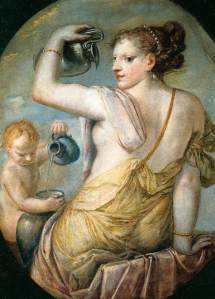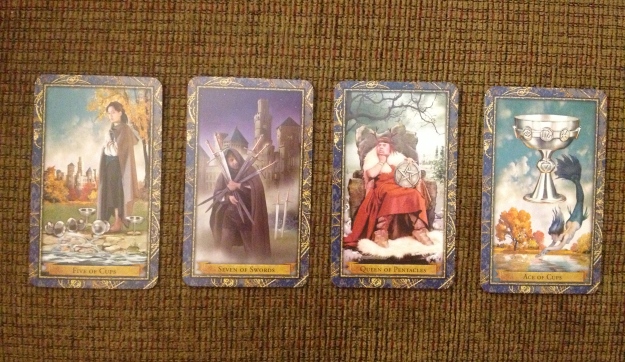Language and magic are like music and dance; they feed and inspire one another. That sentence alone uses a basic element of sympathetic magic—an analogy. Both writing and magic rituals use metonyms and metaphors. As Rachel Beauvoir-Dominique argues in “Underground Realms of Being: Vodoun Magic”:
universal principles of sympathetic magic: natural and social systems of relationship that lie beyond the so-called rational laws of science, touching occult areas through analogy and metaphor
One common example of sympathetic magic is a basic spell to sweeten an enemy. A poppet of some sort is created with a hair–or other personal item, like handwriting–from the enemy. In essence, the person being represented by the poppet is metonymy. Then, the poppet is soaked in sugar water and stored in the freezer. This is basically metaphor; the sweet water soaking the poppet represents sweetening someone’s bitter feelings.
Poetry is filled with metonyms and metaphors. One poem that makes an explicit connection with magic is “Sonnet” (1928) by Elizabeth Bishop:
I am in need of music that would flow
Over my fretful, feeling finger-tips,
Over my bitter-tainted, trembling lips,
With melody, deep, clear, and liquid-slow.
Oh, for the healing swaying, old and low,
Of some song sung to rest the tired dead,
A song to fall like water on my head,
And over quivering limbs, dream flushed to glow!
There is a magic made by melody:
A spell of rest, and quiet breath, and cool
Heart, that sinks through fading colors deep
To the subaqueous stillness of the sea,
And floats forever in a moon-green pool,
Held in the arms of rhythm and of sleep.
As in the poppet spell, water is an element. Bishop creates a comparison between music and water: a shower, the sea, and a “moon-green pool.” The speaker is represented by fingers, lips, head, and limbs (parts of her whole, or metonymy). And the wet music heals the speaker rather than sweetens an enemy (metaphor).
Tarot magic can work in a similar fashion. To correspond with the 14-line sonnet and Bishop’s watery magic, Temperance (XIV) can signify healing through mixing liquids—pouring water into wine symbolizes moderation, which can be important for physical and psychological health.

Decks: Visconti-Sforza Tarot, Rider-Waite-Smith Tarot, Wizards Tarot, Tarocchi della Corte di Merlino
Similar to rain falling into an ocean or pool, the alchemical card can be used in visualization and as a talisman. The metaphor lies between healing and the imagery in the card, and the card itself is a metonym of the literary and artistic tradition of temperance. Some examples of this tradition are Spenser’s allegory of Temperance (in the Faerie Queene) and the familiar visual of pouring liquid between cups (seen below in Pietro Liberi’s painting “The Allegory of Temperance”).  Sympathetic magic is a blending of poetic devices just as Tarot is a blending of poetic imagery. In A History of Magic, Cavendish argues “Language, like mimicry, is an instrument of power.”
Sympathetic magic is a blending of poetic devices just as Tarot is a blending of poetic imagery. In A History of Magic, Cavendish argues “Language, like mimicry, is an instrument of power.”



